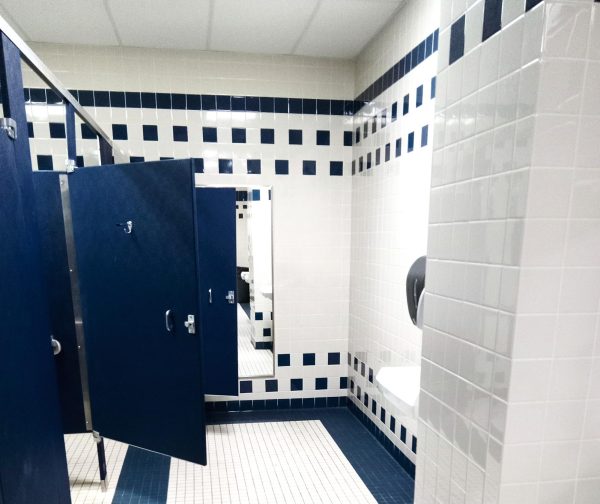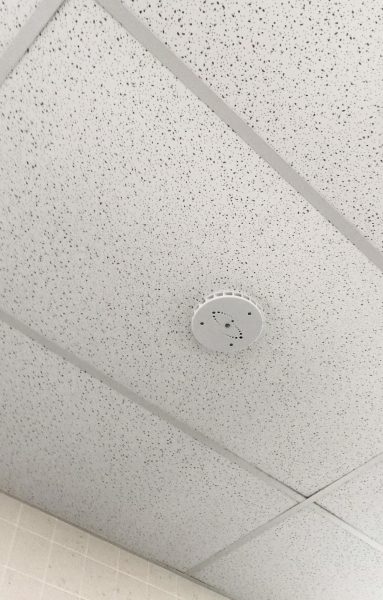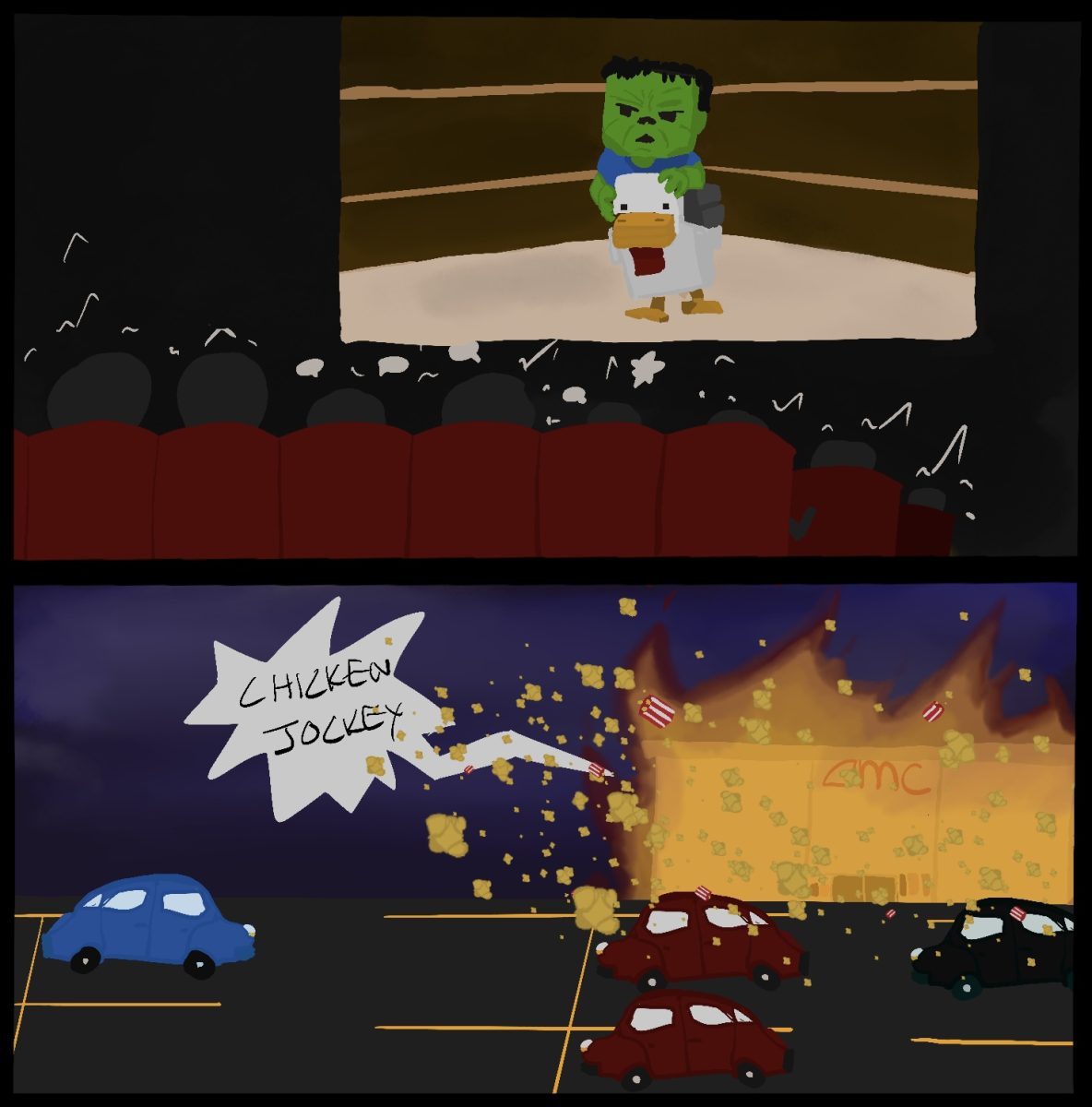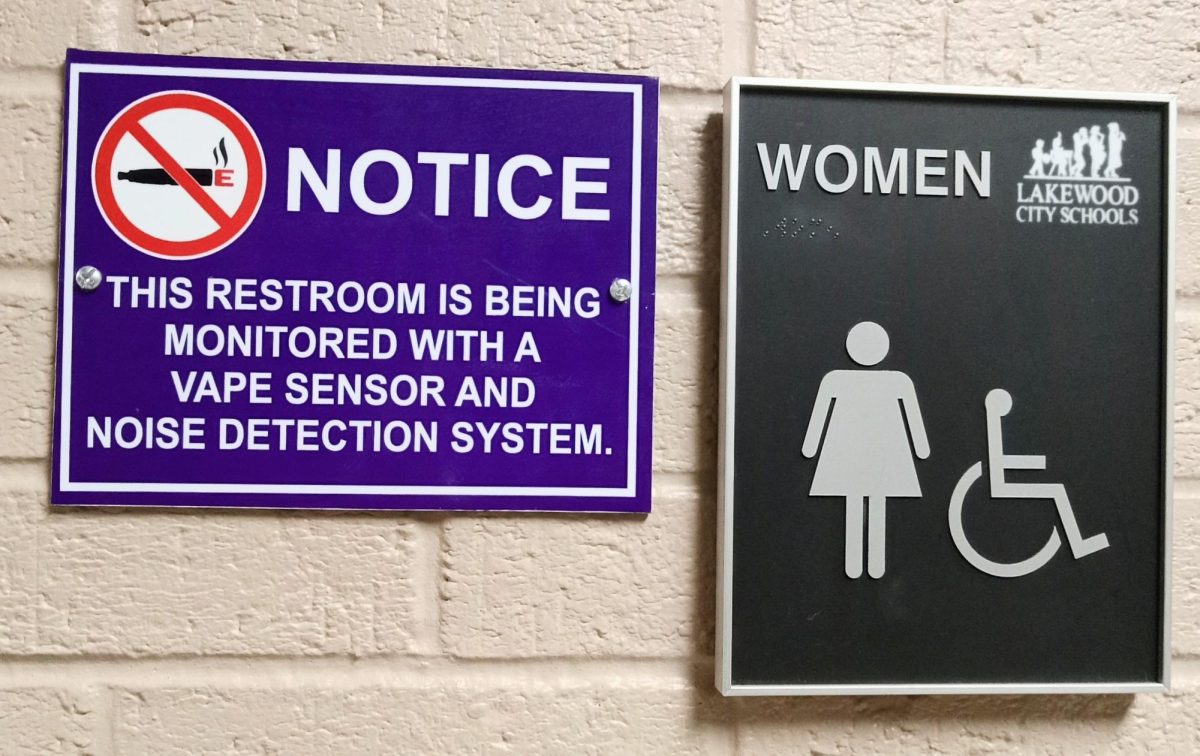Vaping has become one of the largest trends among teens today and raises concerns as to whether or not vaping is healthy. With the rise of vapes bought or sold to underage teens, the number of high school students vaping at school has significantly increased. Lakewood High School recently decided to put vape detectors in the bathrooms to decrease vaping during homeroom and between periods. Has it been a success? Many have been caught vaping and have been disciplined for their actions. Others still successfully get away with it because students know security doesn’t always show up, thus making vape detectors not as handy as intended.
What are the long-term effects of vaping? Although some feel vaping is safe and not as harmful as smoking, in reality, it’s just as bad. Vapes contain nicotine (a toxic chemical that is stimulant and addictive), THC (tetrahydrocannabinol-found in the cannabis plant marijuana), oils, metals, and much, much more. These are items that are used in cigarettes that should not be entering your lungs and are a threat to your health. Just like there are long-term effects of smoking, there are long-term effects of vaping, and it’s not pretty.
“Addiction was probably one of the most long-term effects, and it’s a gateway drug to which leads to other drugs,” health teacher Jason Saksa said. “As far as the effects on the lungs, there are a lot of bad chemicals in vapes, propylene glycol, an oil that coats the lungs and can cause disease of the lower respiratory airways. Vitamin E acetate [antioxidant properties and plays a role in cancer or other diseases] is another harmful chemical.”
How does vaping affect athletes? Health plays a huge role in an athlete’s ability to perform well at high levels and can be the reason why an athlete doesn’t receive a college scholarship. For example, the lungs are the organs most used in track and cross country. If smoke is held within the lungs, it makes it harder for athletes to breathe while running and keeping up their endurance level. Vaping can also affect an athlete’s ability to sleep and eat and raise their risk for injuries.
“Vaping contains substances that impair cognitive function, but also physically, especially with long-distance running,” Mae Mohar said. “It affects your lungs, affects your mental state to where it’s harder to compete and perform at your high ability. I do know people that vape, they tend to have a harder time performing, and I know they can be outstanding athletes.”

How do students feel about other students vaping in the bathrooms? The bathrooms in the school are the most common place where students come together and vape. Whether that’s with friends or individually, students find time during the day to take a hit of their vape and enjoy the unhealthy pleasure that it comes with. What these students may fail to consider is that students who don’t find vaping appetizing must walk to other bathrooms to use the restroom. The smell of the vape disturbs students, and these students are forced to walk to the other side of the school to merely breathe in fresh air. That’s when secondhand smoke comes into play, which is when the smoker or vaper exhales smoke from their product, which is then breathed in by non-smokers, which can cause a risk of illnesses.
“I don’t quite like it because I have to use the restroom sometimes and it smells really bad,” junior Simone Larsen said. “Also, I often find myself having to walk to different bathrooms just to find a spot where I could go to the bathroom.”
What do authorities need to do to lower the rise of vaping? Educate and raise awareness amongst teens and parents because parents might not know what their teens are doing. Teens might not realize the true costs of vaping and how it could affect them in the long term. More effort must be put into educating students, not just one semester of health class.
“What I do now is the education part and a lot of people don’t know what they don’t know,” Saksa said. “I think the misconception that it’s a vape and the name itself is misleading. I think parents need to be on board, know this is what your kids might be doing, and this is what it’s doing to them.”
Do the vape detectors work? It was effective initially, but the schools don’t regularly enforce and check them when they go off. Students like Mohar feel there shouldn’t even be a spot dedicated for students to vape and to keep vaping off of school grounds.

“I think originally they [vape detectors] were, but once people realize that the security doesn’t come when they go off it makes people not care, and people have found ways around it,” Mohar said.
What can students do? One of the biggest reasons for the rise in vaping is because of peer pressure. Vaping has become a “trend,” meaning that if one student vapes, other students think it’s cool and feel the need to fit in. To prevent students from forming an addiction to vapes, students should understand the risks and the long-term effects and surround themselves with healthy friendships. If students are trying to quit vaping, students should find a trusted adult or friend to get help.
“If you find yourself [peer pressured] in groups of people, try to distance yourself from those people,” Larsen said. “Don’t surround yourself with people who make you feel worse and like to drag you down.”
















































